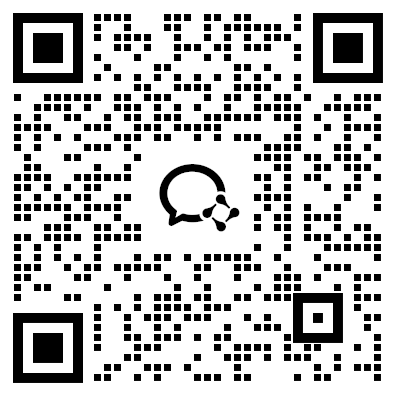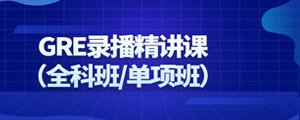选课中心
7099人选课
GRE公开讲座
0元
GMAT公开讲座
0元
一对一体验课
99元
GRE模考网站
10000人
托福TPO模考网站HOT
39209人预约
GRE辅导课程
17537 人
GMAT辅导课程
17537 人
托福辅导课程
17537 人
【定制】1v1
私人订制
资料下载
考前冲刺

扫码关注掌握一手留学资讯
回复XDF免费领
水平测试和备考资料

扫码关注公众号
生物材料领域的重要问题
SECTION B
Currently, the paramount problem in the field of biomaterials, the science of replacing diseased tissue with human-made implants, is control over the interface, or surface, between implanted biomaterials and living tissues. The physical properties of most tissues can be matched by careful selection of raw materials: metals, ceramics, or several varieties of polymer materials. Even the requirement that biomaterials processed from these materials be nontoxic to host tissue can be met by techniques derived from studying the reactions of tissue cultures to biomaterials or from short-term implants. But achieving necessary matches in physical properties across interfaces between living and non-living matter requires knowledge of which molecules control the bonding of cells to each other—an area that we have not yet explored thoroughly. Although recent research has allowed us to stabilize the tissue-biomaterial interface by controlling either the chemical reactions or the microstructure of the biomaterial, our fundamental understanding of how implant devices adhere to tissues remains woefully incomplete.
17. According to the passage, the major problem currently facing scientists in the field of biomaterials is
(A) assessing and regulating the bonding between host tissue and implants
(B) controlling the transfer of potentially toxic materials across the interface of tissue and implant
(C) discovering new materials from which to construct implant devices
(D) deciding in what situations implants are needed(A)
(E) determining the importance of short-term implants to long-term stability of tissue-implant interfaces
18. The passage suggests which of the following about the recent research mentioned in lines 19-25?
(A) It has solved one set of problems but has created another.
(B) It has concentrated on secondary concerns but has ignored primary concerns.
(C) It has improved practical applications of biomaterial technology without providing a complete theoretical explanation of that improvement.
(D) It has thoroughly investigated properties of biomaterials but has paid little attention to relevant characteristics of human tissue.(C)
(E) It has provided considerable information on short-term implant technology but little on long-term implant technology.
19. The author’s primary purpose is to
(A) answer a theoretical question in the field of biomaterials
(B) discuss the current state of technology in the field of biomaterials
(C) resolve a research dispute in the field of biomaterial
(D) predict an ethical crisis for biomaterials researchers(B)
(E) suggest some practical benefits of biomaterial implants
Islamic law is a particularly instructive example of “sacred law.” Islamic law is a phenomenon so different from all other forms of law—notwithstanding, of course, a considerable and inevitable number of coincidences with one or the other of them as far as subject matter and positive enactments are concerned—that its study is indispensable in order to appreciate adequately the full range of possible legal phenomena. Even the two other representatives of sacred law that are historically and geographically nearest to it, Jewish law and Roman Catholic canon law (canon law: 教会法规), are perceptibly different.
Both Jewish law and canon law are more uniform than Islamic law. Though historically there is a discernible break between Jewish law of the sovereign state of ancient Israel and of the Diaspora (the dispersion of Jewish people after the conquest of Israel), the spirit of the legal matter in later parts of the Old Testament is very close to that of the Talmud, one of the primary codifications of Jewish law in the Diaspora. Islam, on the other hand, represented a radical breakaway from the Arab paganism that preceded it; Islamic law is the result of an examination, from a religious angle, of legal subject matter that was far from uniform, comprising as it did the various components of the laws of pre-Islamic Arabia and numerous legal elements taken over from the non-Arab peoples of the conquered territories. All this was unified by being subjected to the same kind of religious scrutiny, the impact of which varied greatly, being almost nonexistent in some fields, and in others originating novel institutions. This central duality of legal subject matter and religious norm is additional to the variety of legal, ethical, and ritual rules that is typical of sacred law.
In its relation to the secular state, Islamic law differed from both Jewish and canon law. Jewish law was buttressed by the cohesion of the community, reinforced by pressure from outside; its rules are the direct expression of this feeling of cohesion, tending toward the accommodation of dissent. Canon and Islamic aw, on the contrary, were dominated by the dualism of religion and state, where the state was not, in contrast with Judaism, an alien power but the political expression of the same religion. But the conflict between state and religion took different forms; in Christianity it appeared as the struggle for political power on the part of a tightly organized ecclesiastical hierarchy, and canon law was one of its political weapons. Islamic law, on the other hand, was never supported by an organized institution; consequently, there never developed an overt trial of strength. There merely existed discordance between application of the sacred law and many of the regulations framed by Islamic states; this antagonism varied according to place and time.
20. The author’s purpose in comparing Islamic law to Jewish law and canon law is most probably to
(A) contend that traditional legal subject matter does not play a large role in Islamic law
(B) support his argument that Islamic law is a unique kind of legal phenomenon
(C) emphasize the variety of forms that can all be considered sacred law
(D) provide an example of how he believes comparative institutional study should be undertaken(B)
(E) argue that geographical and historical proximity does not necessarily lead to parallel institutional development
21. The passage provides information to answer which of the following questions?
(A) Does Islamic law depend on sources other than Arab legal principles?
(B) What secular practices of Islamic states conflicted with Islamic law?
(C) Are Jewish law and canon law the most typical examples of sacred law?
(D) Is Jewish law more uniform than canon law?(A)
(E) What characterized Arab law of the pre-Islamic era?
22. According to the passage, which of the following statements about sacred law is correct?
(A) The various systems of sacred law originated in a limited geographical area.
(B) The various systems of sacred law have had marked influence on one another.
(C) Systems of sacred law usually rely on a wide variety of precedents.
(D) Systems of sacred law generally contain prescriptions governing diverse aspects of human activity.(D)
(E) Systems of sacred law function most effectively in communities with relatively small populations.
23. It can be inferred from the passage that the application of Islamic law in Islamic states has
(A) systematically been opposed by groups who believe it is contrary to their interests
(B) suffered irreparably from the lack of firm institutional backing
(C) frequently been at odds with the legal activity of government institutions
(D) remained unaffected by the political forces operating alongside it(C)
(E) benefited from the fact that it never experienced a direct confrontation with the state
24. Which of the following most accurately describes the organization of the passage?
(A) A universal principle is advanced and then discussed in relation to a particular historical phenomenon.
(B) A methodological innovation is suggested and then examples of its efficacy are provided.
(C) A traditional interpretation is questioned and then modified to include new data.
(D) A general opinion is expressed and then supportive illustrations are advanced.(D)
(E) A controversial viewpoint is presented and then both supportive evidence and contradictory evidence are cited.
25. The passage implies that the relationship of Islamic, Jewish, and canon law is correctly described by which of the following statements?
I. Because each constitutes an example of sacred law, they necessarily share some features.
II. They each developed in reaction to the interference of secular political institutions.
III. The differences among them result partly from their differing emphasis on purely ethical rules.
(A) I only
(B) III only
(C) I and II only
(D) II and III only(A)
(E) I, II, and III
26. The passage suggests that canon law differs from Islamic law in that only canon law
(A) contains prescriptions that nonsacred legal systems might regard as properly legal
(B) concerns itself with the duties of a person in regard to the community as a whole
(C) was affected by the tension of the conflict between religion and state
(D) developed in a political environment that did not challenge its fundamental existence(E)
(E) played a role in the direct confrontation between institutions vying for power
27. All of the following statements about the development of Islamic law are implied in the passage EXCEPT:
(A) Pre-Islamic legal principles were incorporated into Islamic law with widely differing degrees of change.
(B) Diverse legal elements were joined together through the application of a purely religious criterion.
(C) Although some of the sources of Islamic law were pagan, its integrity as a sacred law was not compromised by their incorporation.
(D) There was a fundamental shared characteristic in all pre-Islamic legal matter taken over by Islamic law.(D)
(E) Although Islam emerged among the Arabs, Islamic law was influenced by ethnically diverse elements.

 资料下载
资料下载
2024中国学生留学备考白皮书下载
发布时间:2024-05-20添加新东方在线美研助教号
回复【资料】获取
GRE高频真词表资料下载
发布时间:2024-05-20添加新东方在线美研助教号
回复【资料】获取
GRE数学-OG官方150题资料下载
发布时间:2024-05-20添加新东方在线美研助教号
回复【资料】获取
GRE数学常用词汇资料下载
发布时间:2024-05-20添加新东方在线美研助教号
回复【资料】获取
2024GRE数学重点突破资料下载
发布时间:2024-05-20添加新东方在线美研助教号
回复【资料】获取
2024GMAT模考题&答案资料下载
发布时间:2024-05-20添加新东方在线美研助教号
回复【资料】获取
GRE&GMAT阅读难句教程资料下载
发布时间:2024-05-20添加新东方在线美研助教号
回复【资料】获取
2024年托福考试重点题目资料下载
发布时间:2024-05-20添加新东方在线美研助教号
回复【资料】获取
托福独立口语必练70题资料下载
发布时间:2024-05-20关注新东方在线美研订阅号
回复【GRE】获取
托福口语综合口语精听50题节选资料下载
发布时间:2024-05-20添加新东方在线美研助教号
回复【资料】获取
托福听力1200词资料下载
发布时间:2024-05-20添加新东方在线美研助教号
回复【资料】获取
托福写作综合写作练习册-听力精听25篇资...
发布时间:2024-05-20添加新东方在线美研助教号
回复【资料】获取
托福写作综合写作练习册-阅读改写50篇资...
发布时间:2024-05-20添加新东方在线美研助教号
回复【资料】获取
托福阅读核心词表1500词(前30天优先必学...
发布时间:2024-05-20添加新东方在线美研助教号
回复【资料】获取

添加美研助教号,
回复【GRE】获取备考必看资料包

 推荐阅读
推荐阅读
备考GRE,对大部分同学来说也是一个新挑战,尤其是阅读部分,如何在有限的时间内大幅提高阅读速度呢? 快来本文看看吧。
本文今天为大家带来的是gre考试中easy等级难度的阅读片段,一起来看看吧!
2022年3月13-19日GRE阅读题回忆及答案(六)来啦,来本文和新东方在线GRE一起来看看详细信息吧。
2022年3月13-19日GRE阅读题回忆及答案(五)来啦,来本文和新东方在线GRE一起来看看详细信息吧。
2022年3月13-19日GRE阅读题回忆及答案(四)来啦,来本文和新东方在线GRE一起来看看详细信息吧。
2022年3月13-19日GRE阅读题回忆及答案(三)来啦,来本文和新东方在线GRE一起来看看详细信息吧。
2022年3月13-19日GRE阅读题回忆及答案(二)来啦,来本文和新东方在线GRE一起来看看详细信息吧。
2022年3月13-19日GRE阅读题回忆及答案(一)来啦,来本文和新东方在线GRE一起来看看详细信息吧。
2022年2月13日GRE阅读题回忆及答案来啦,来本文和新东方在线GRE一起来看看详细信息吧。
2022年2月13日GRE阅读题回忆及答案来啦,来本文和新东方在线GRE一起来看看详细信息吧。


 GRE录播课(全科班/单项班)
GRE录播课(全科班/单项班)
 GMAT6-8人直播VIP小班
GMAT6-8人直播VIP小班
 托福直播精讲班(30天/60天)
托福直播精讲班(30天/60天)
添加美研助教号,
回复【GRE】获取备考必看资料包

 资料下载
资料下载
添加新东方在线美研助教号
回复【资料】获取
添加新东方在线美研助教号
回复【资料】获取
添加新东方在线美研助教号
回复【资料】获取
添加新东方在线美研助教号
回复【资料】获取
添加新东方在线美研助教号
回复【资料】获取
添加新东方在线美研助教号
回复【资料】获取
添加新东方在线美研助教号
回复【资料】获取
添加新东方在线美研助教号
回复【资料】获取
关注新东方在线美研订阅号
回复【GRE】获取
添加新东方在线美研助教号
回复【资料】获取
添加新东方在线美研助教号
回复【资料】获取
添加新东方在线美研助教号
回复【资料】获取
添加新东方在线美研助教号
回复【资料】获取
添加新东方在线美研助教号
回复【资料】获取

 阅读排行榜
阅读排行榜
 相关内容
相关内容